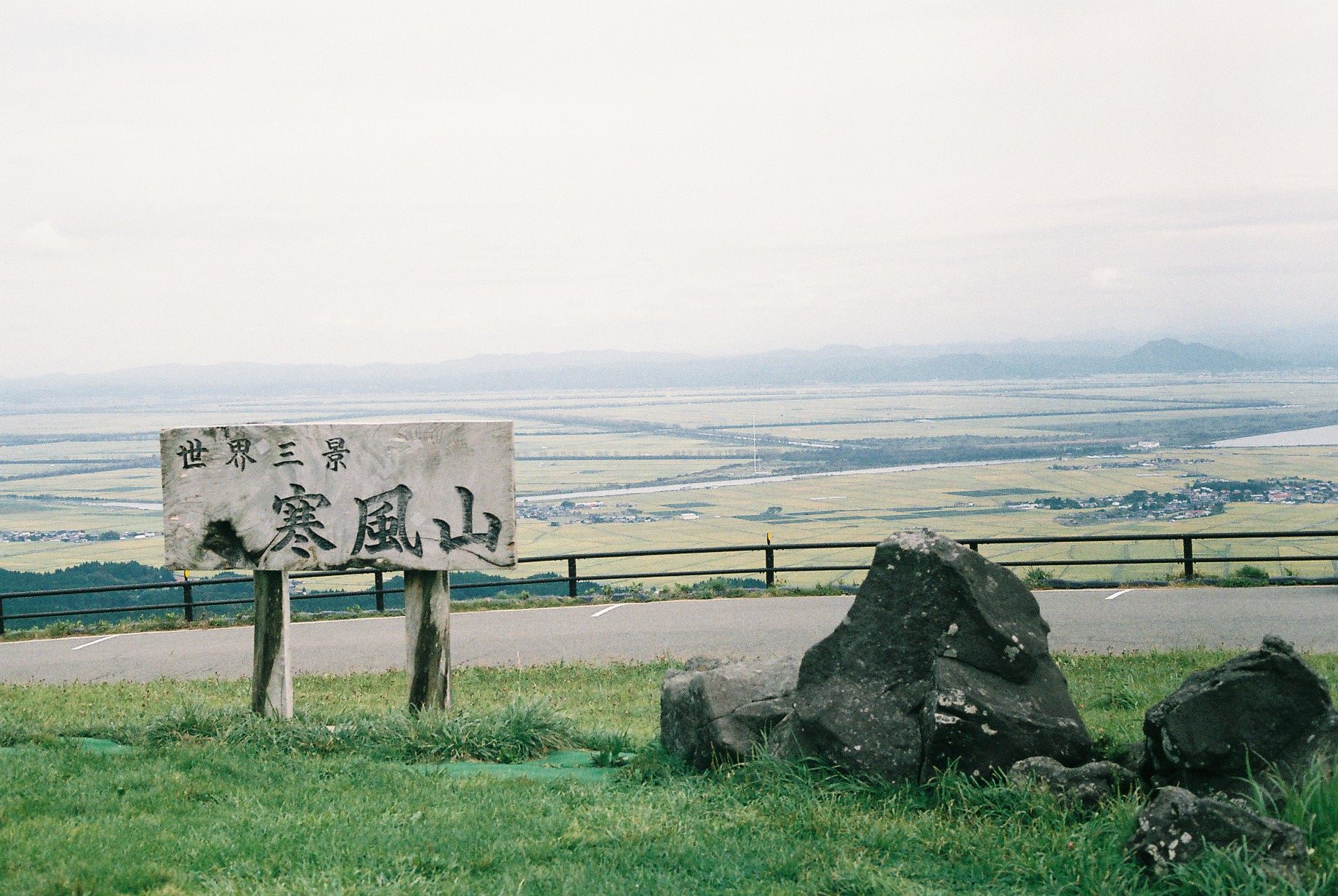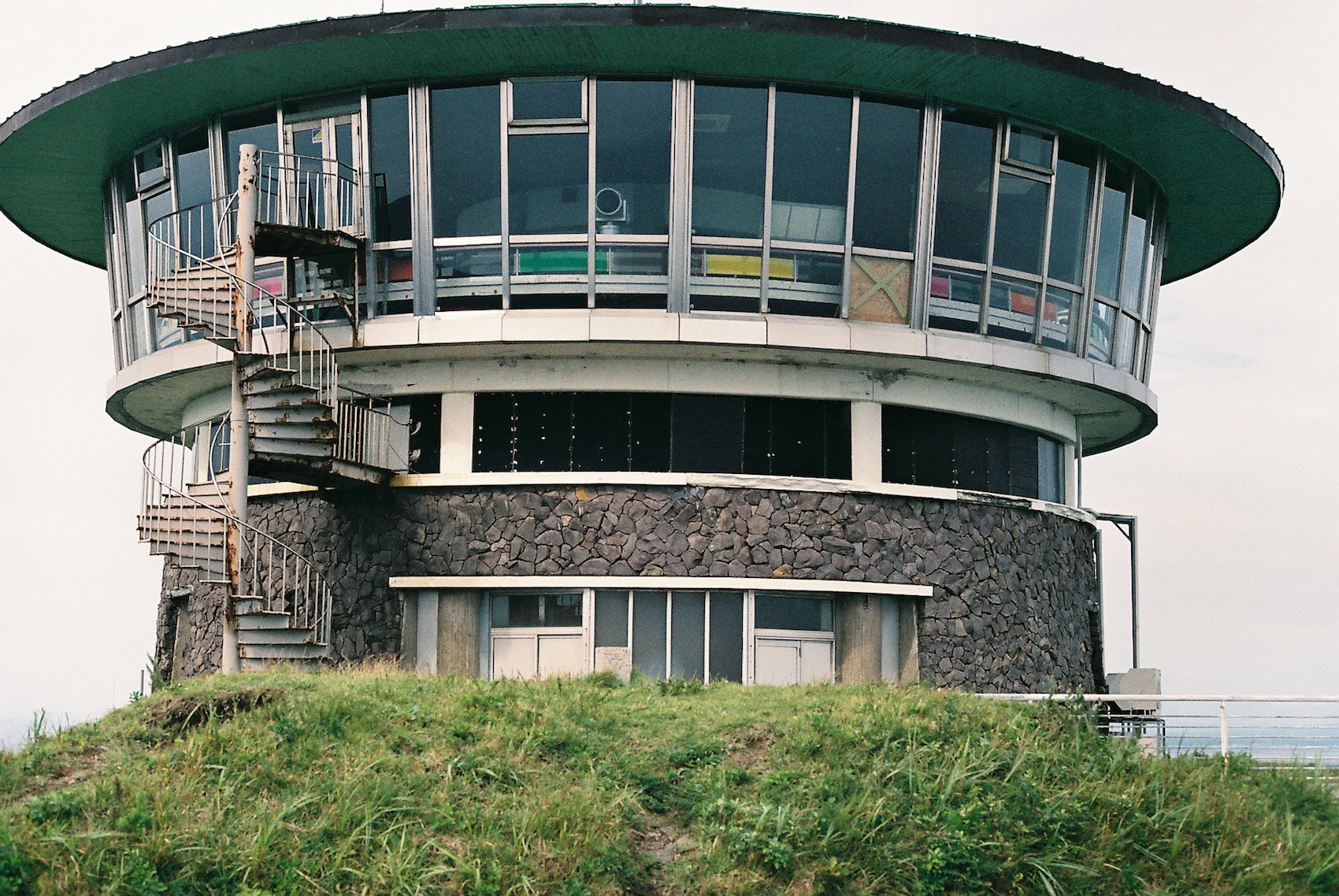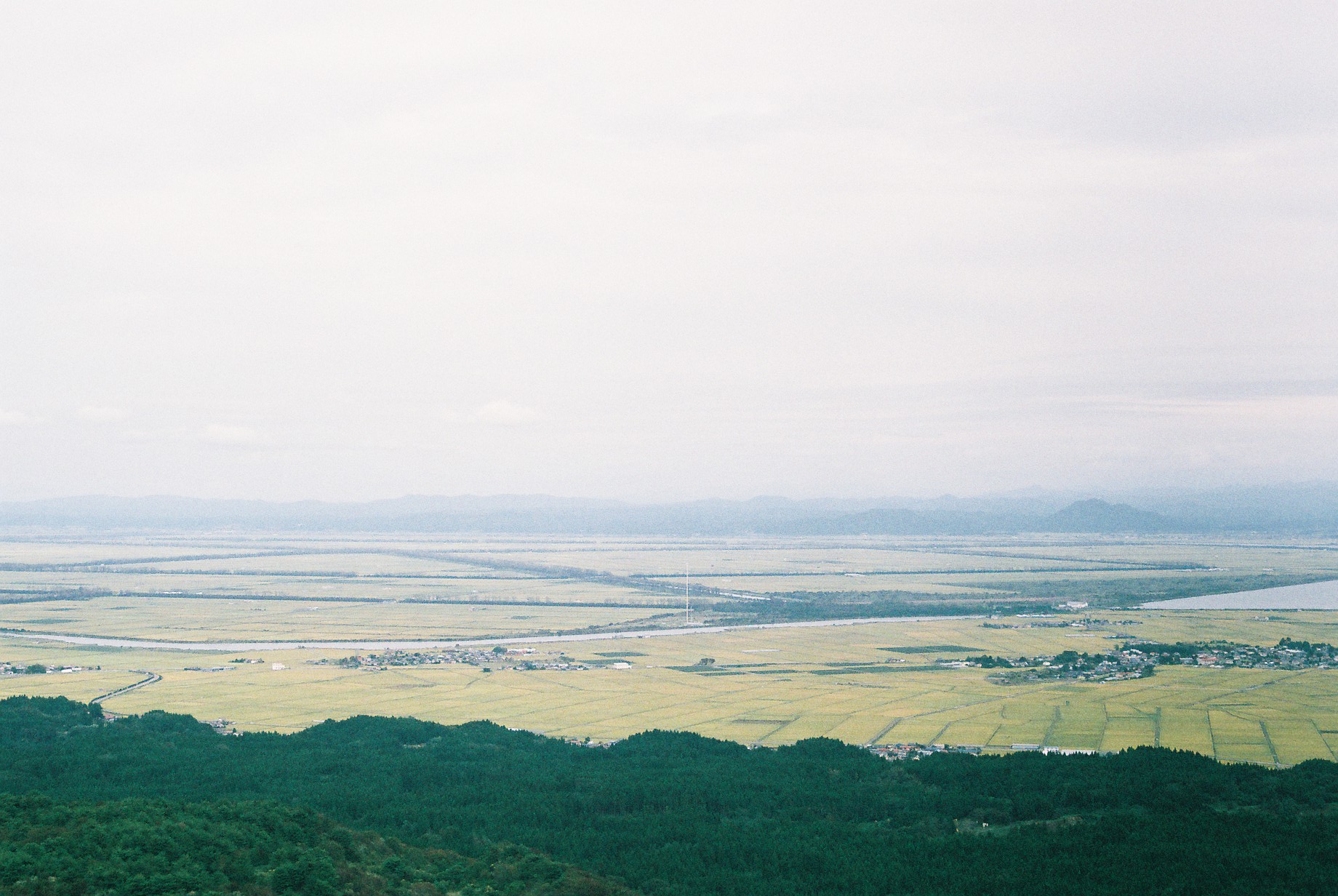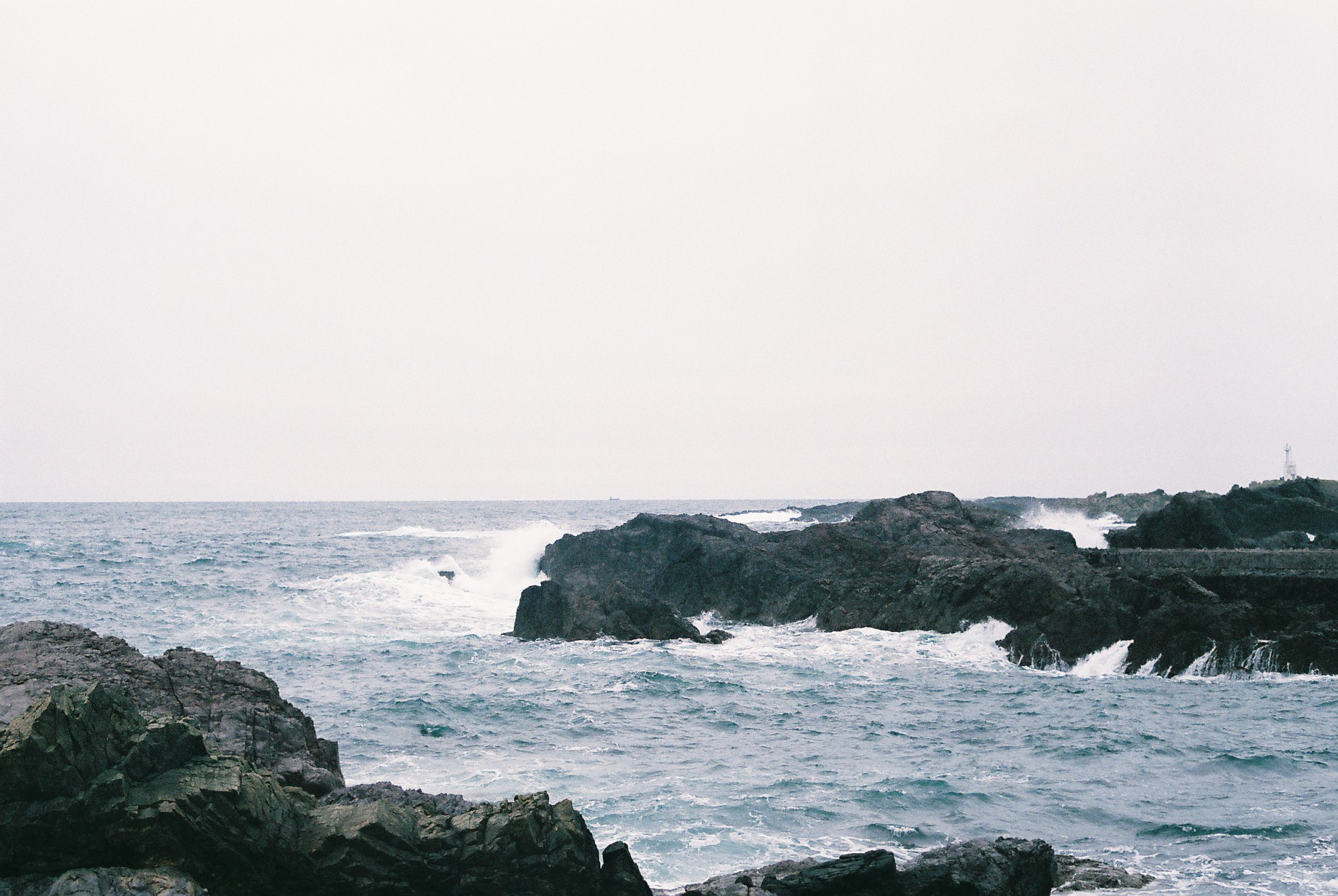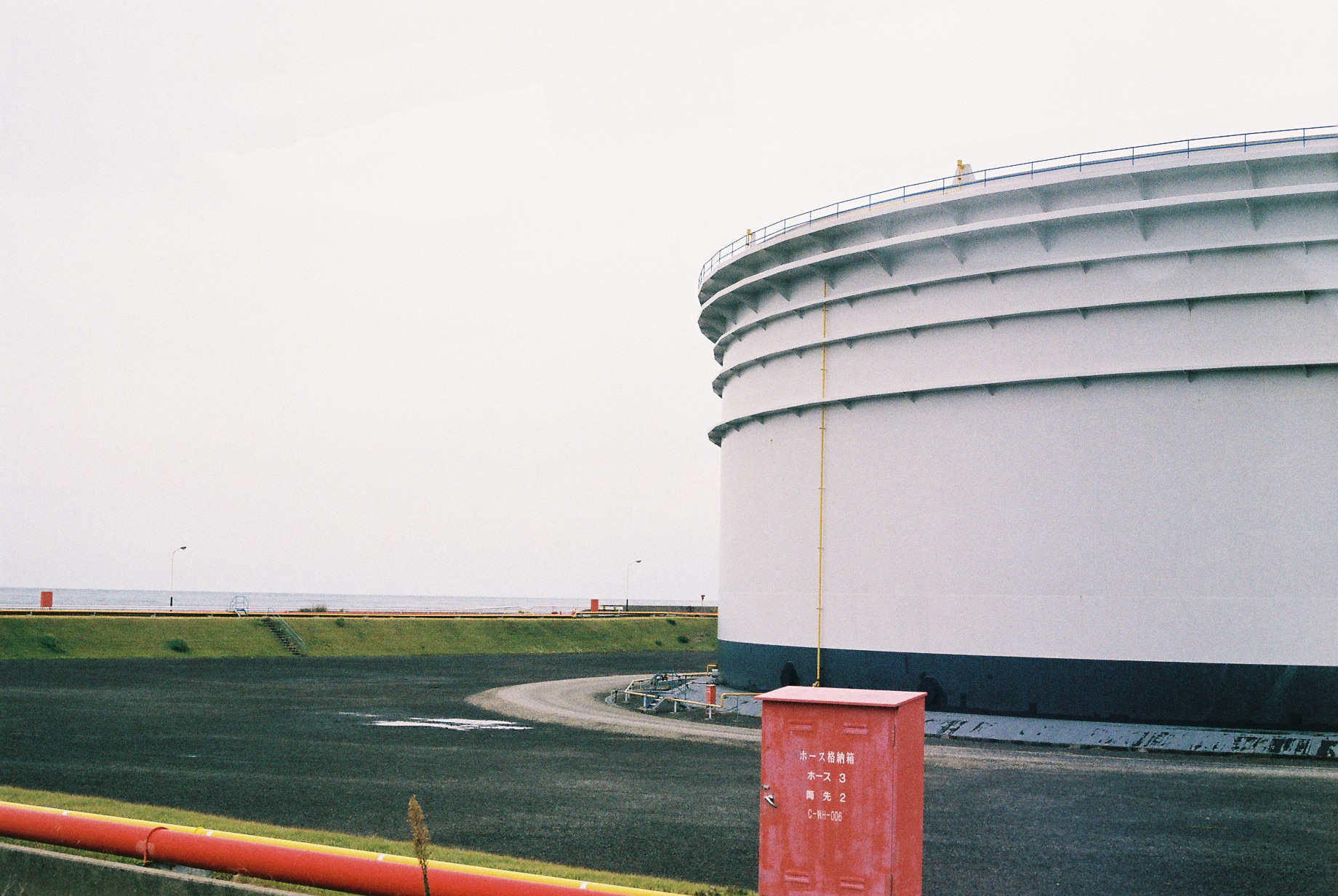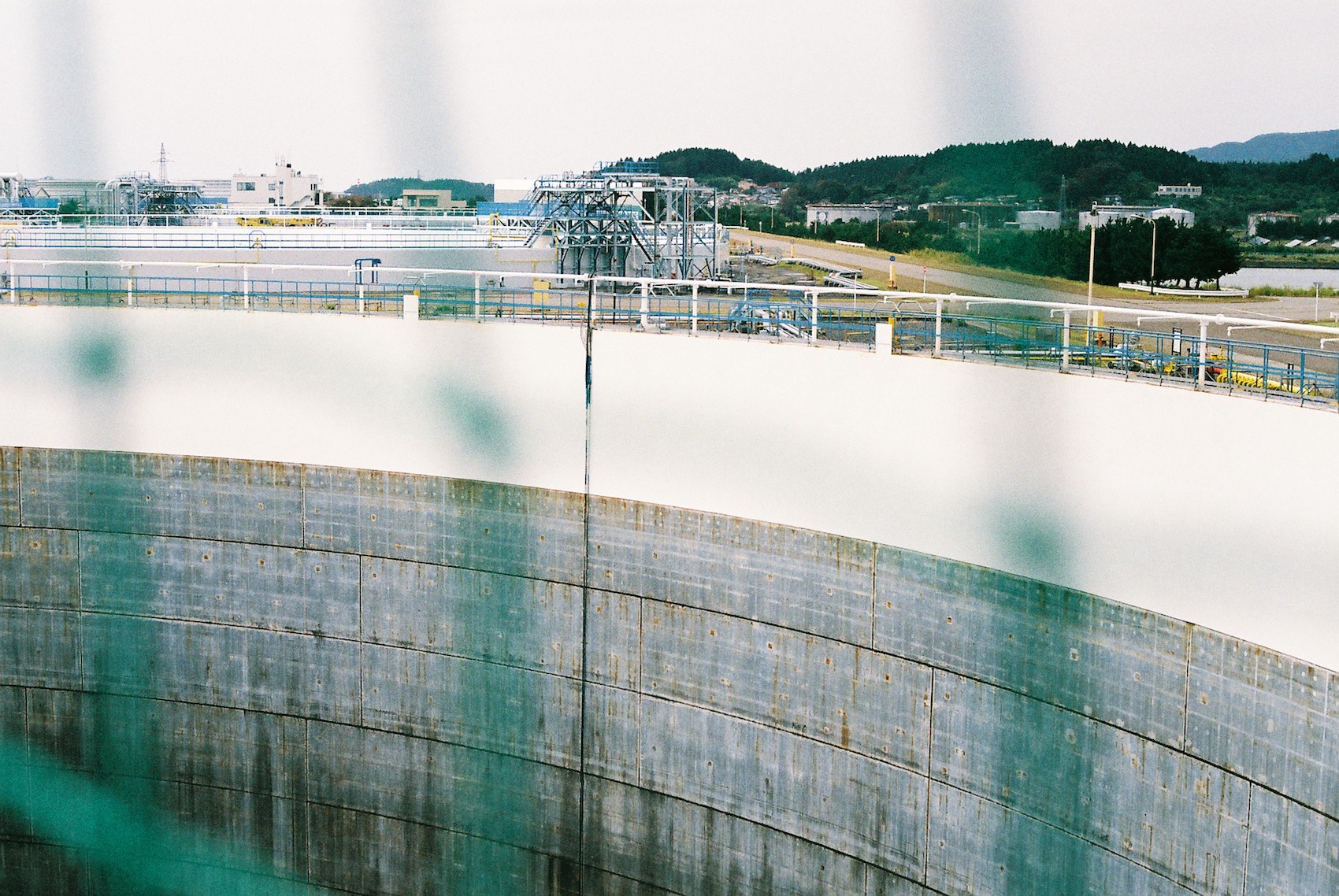男鹿(おが)は、本州北部に位置する秋田県の沿岸部にあり、日本海へ西に突き出したギザギザした形の、自然豊かな半島だ。冬の寒さが厳しく、広大な海に臨み、荒野が広がるその半島の一風変わった美しさには、人々の心を惹きつける何かがある。男鹿を象徴するものといえば、大酒飲みで、新年になると子供をさらいにやって来る、牙をむき出しにした恐ろしい見た目の妖怪、なまはげだ。
いつもとは違って、その土地の誇る歴史に多く触れることができ、大規模な観光化が進んでいない場所を旅行先として探しているのであれば、男鹿旅行をぜひ検討してみてほしい。今回は、男鹿半島のひと味違った美しさを紹介する。
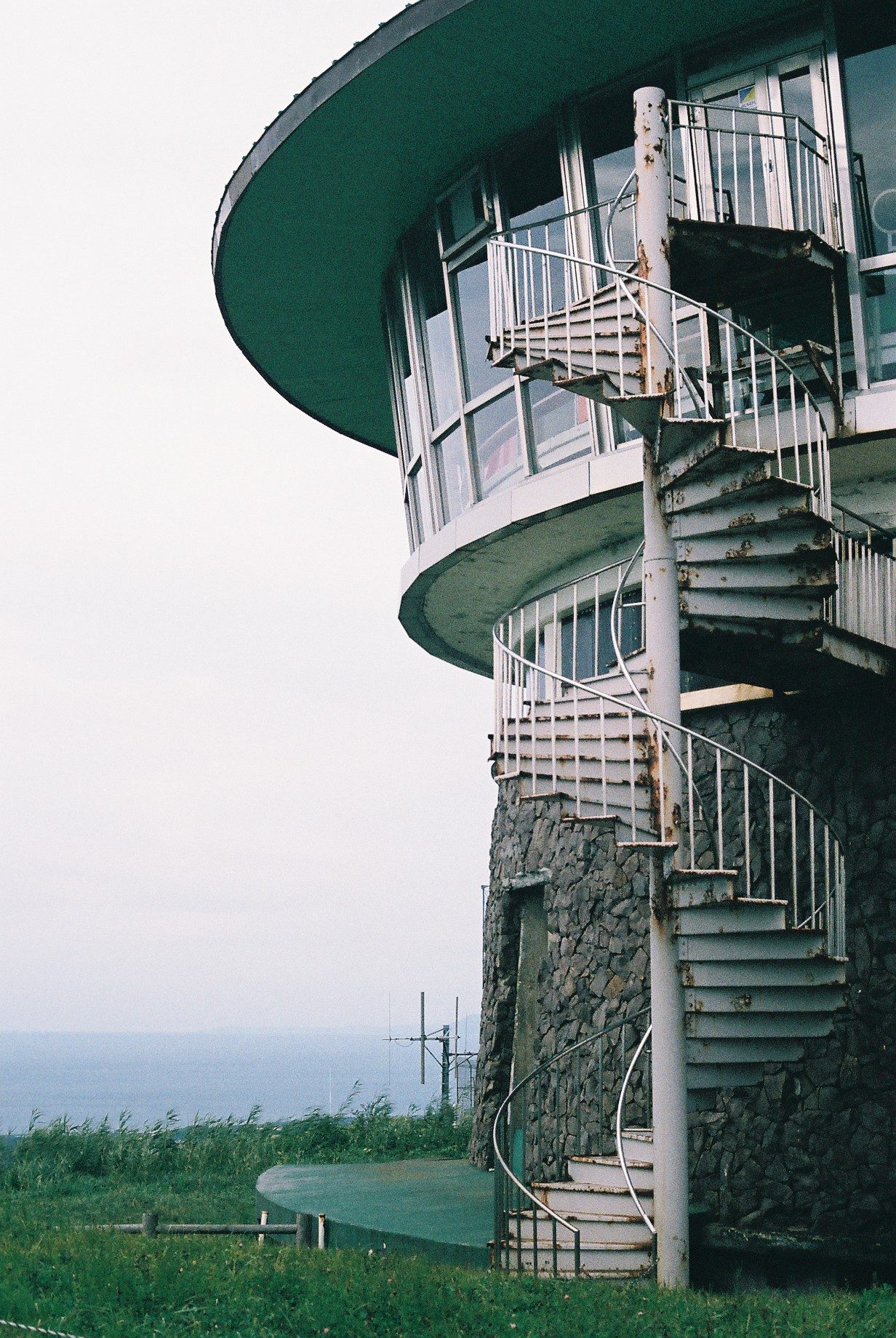
Photo by Lucy Dayman
なまはげ伝説
男鹿には、足を踏み入れた瞬間から帰るまさにその時まで、どこに行っても目にすることになるお馴染みの生き物がいる。それがなまはげであり、愛されると同時に、その分だけ恐れられてもいる生き物だ。なまはげは、男鹿半島の端にある山に住むと言われる妖怪であり、背が高く、毛むくじゃらの不気味な容貌をした鬼のような生き物。原始人に似た格好が定番となっており、にわか作りの丈の長い羽織から、わらを落として歩く。
その地で新年に行われる伝統行事、「なまはげまつり」では、なまはげの集団が山から下りてきて、男鹿の家々を訪ね、子供を脅かして、いい子でいるように言い聞かせる。子供たちは、親の言うことを聞かずに1年を過ごすと、なまはげに連れさらわれて、山の中でなまはげたちと一緒に暮らすことになるかもしれない、と言い伝えられている。
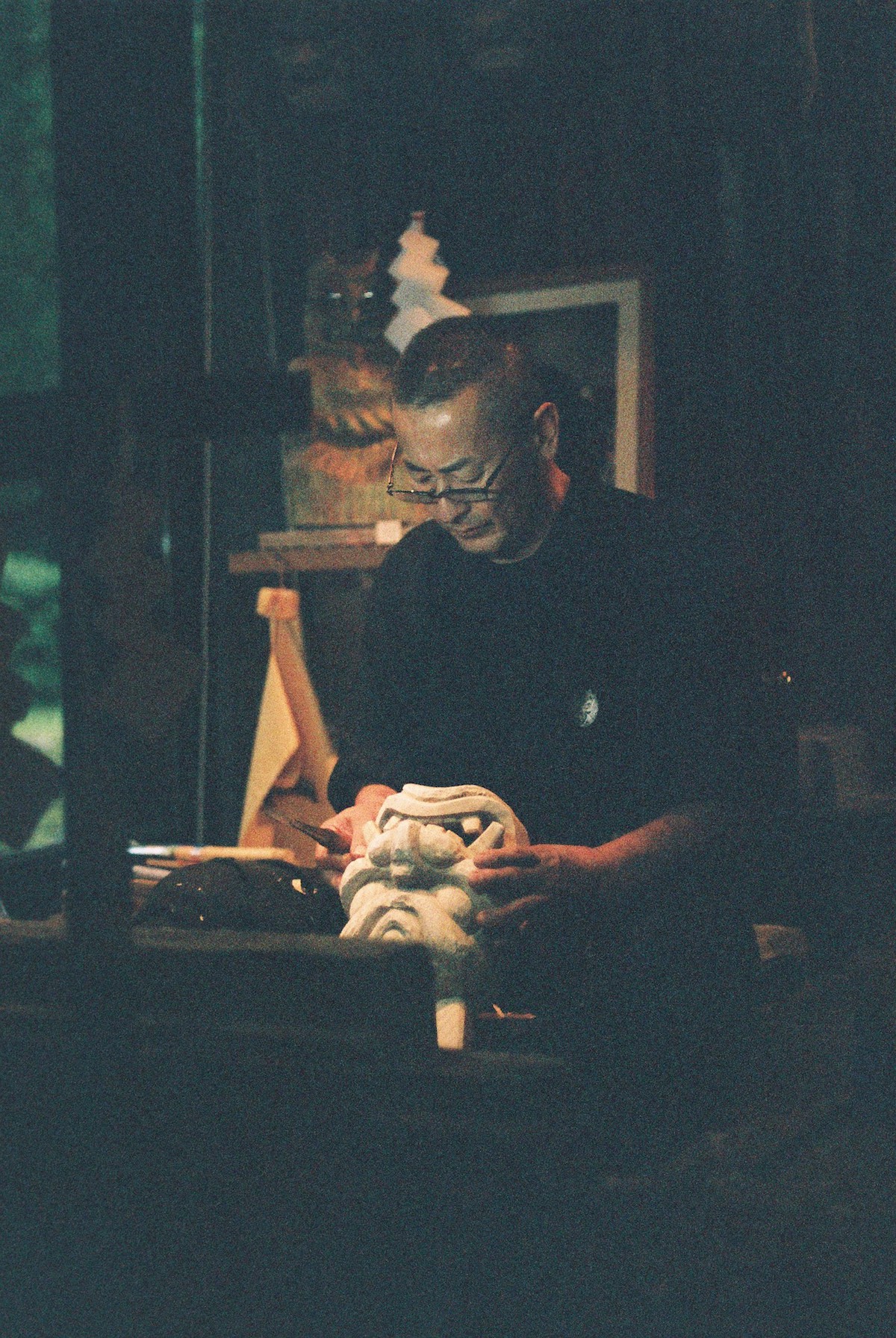
Photo by Lucy Dayman
ある逸話によると、船乗りが難破して男鹿半島沿岸に流れ着き、付近の山で暮らすようになったのが、なまはげの始まりだとしている。なまはげは山で暮らすうちに、村を荒らして回り、農作物を盗み、若い女性を誘拐することで知られるようになった。
この野蛮ななまはげたちを村から追い出すための手段として、村人はなまはげに取引を持ちかけた。一晩で1000段の石段を造ることができれば、なまはげに村の女性全員を差し出すというものだ。ただし、この課題をクリアできなければ、一生村に近づいてはいけない。なまはげはこの取引に応じ、石段造りに取りかかったが、最後の1段が完成する直前に、ひとりの村人が鶏の鳴き真似をした。なまはげたちは騙されて、課題をクリアできなかったと思い込み、山の中へと逃げ込んで、毎年大晦日にのみ姿を現すようになった。
なまはげ伝説をもう少し詳しく学びたいという人に、おすすめの場所がいくつかあるので、ここで紹介しておこう。
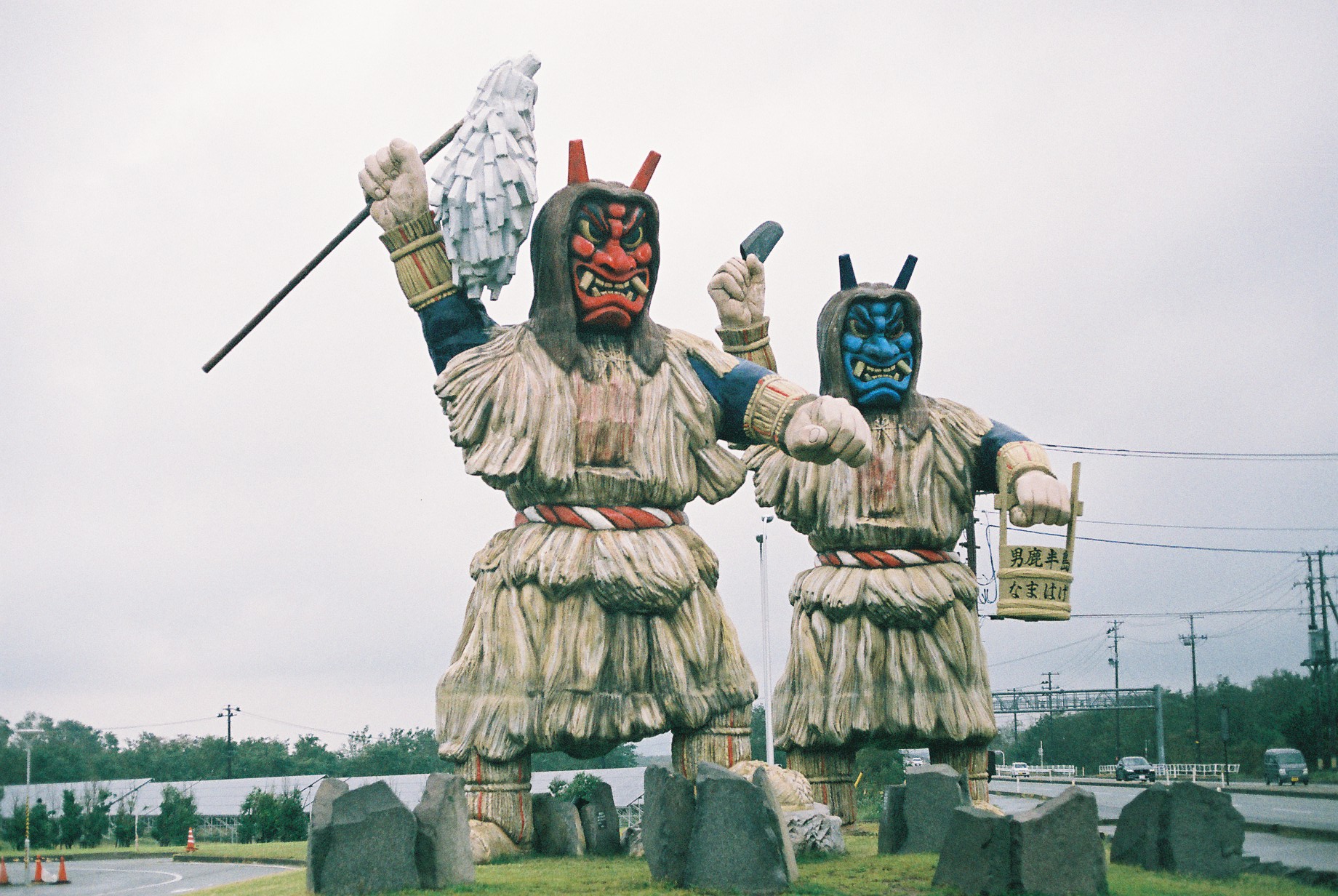
Photo by Lucy Dayman
なまはげ館:なまはげについて、伝説と現代的な解釈の両面から、基礎的な情報を網羅している。地元の伝説を元にした動画、芸術作品、衣装が展示されており、体験型の展示も用意してある。しかし、なまはげ館の目玉といえば、様々な解釈に基づき作成されたなまはげの衣装を、男鹿の多数のコミュニティから集めて幅広く取りそろえた展示室だ。
なまはげ館の隣には、男鹿真山伝承館がある。男鹿の伝統的な家屋を模した建物で、一年を通してなまはげ行事の再現が行われている体験型の劇場のような施設だ。近くには真山神社もある。高さ560m超の真山の頂上に建つ真山神社は、毎年2月に行われる柴灯まつりの開催地となっている。
なまはげが999段の石段を造ったという伝説が生まれた地を見てみたいのであれば、五社堂(赤神神社)に足を運ぶといい。赤神神社は、5つの建物から成る構造の神社で、17世紀の間に建設された。時間に余裕があれば、訪れる価値は十分にある。
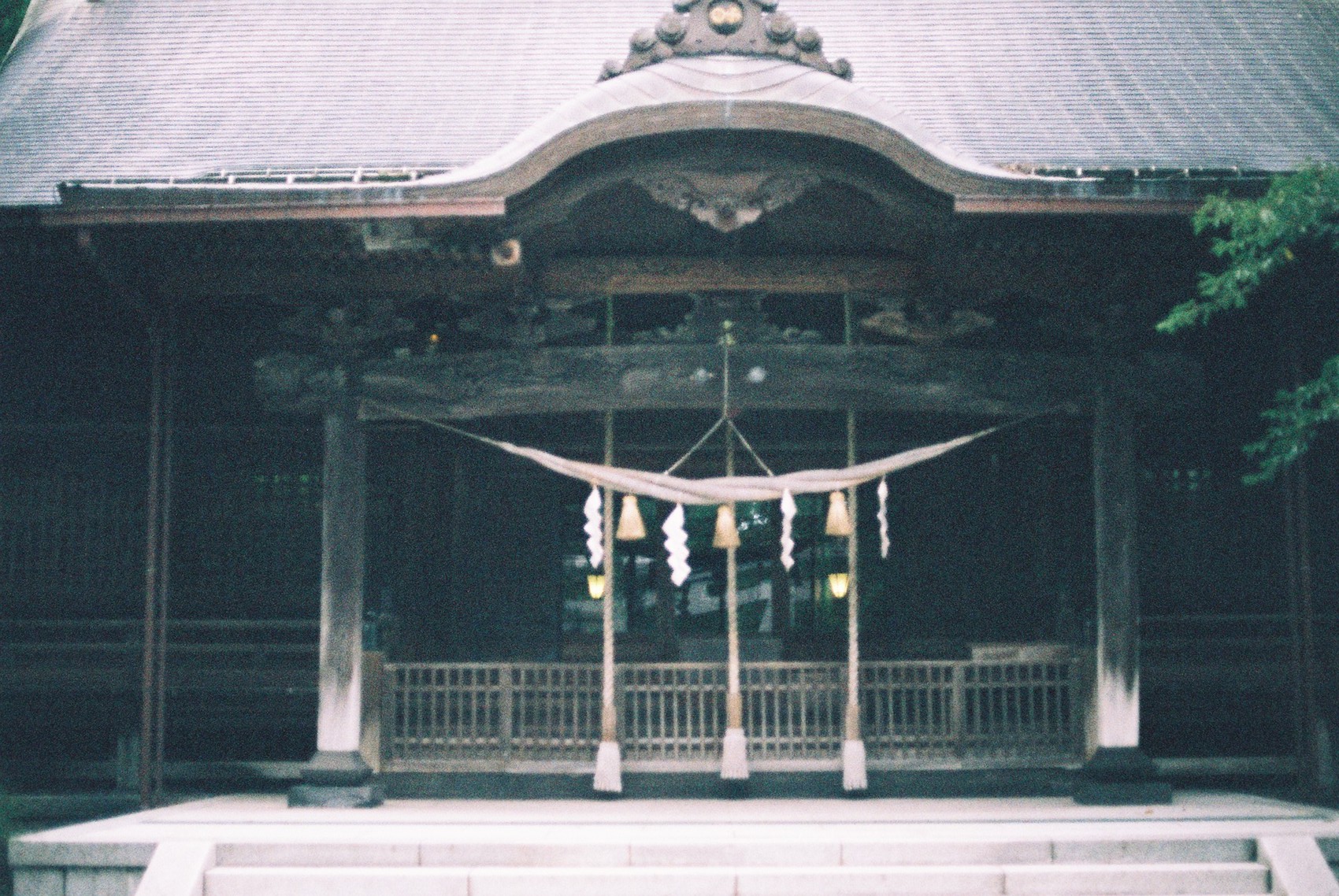
Photo by Lucy Dayman
寒風山
男鹿ではどこにいっても目にすることになるが、山に出没する恐ろしい妖怪の他にも、魅力はたくさんある。男鹿半島は緑の豊かな丘陵地帯だが、その絶景の美しさを存分に堪能するには、寒風山を登るのがいちばんだ。その頂上には、寒風山展望台がある。寒風山展望台は、シンプルな作りの回転式展望台で、やや古びてはいるが、かわいらしくもある。展望台はゆっくりと回転しており、7分間かけて360度の景色を楽しむことができる。展望台の下には、土産物店があり、地元の品々を多数取り揃えている。
- Photo by Lucy Dayman
- Photo by Lucy Dayman
- Photo by Lucy Dayman
申川油田
最も魅力的な観光地としては挙げられないかもしれないが、申川油田は男鹿を代表する歴史的建造物のひとつだ。北岸から沖合に広がるこの広大な荒野を巡るツアーが時々開催されており、被写体としてとても素晴らしいと言う人もいる。清掃のため、油の貯蔵タンクを空にすることがあり、この間には巨大な貯蔵施設の全貌が、観光客に公開される。
- Photo by Lucy Dayman
- Photo by Lucy Dayman
- Photo by Lucy Dayman
冬の旅行に向け、世界のどこにもないような新年の伝統行事を体験できる場所や、まだ観光地化されていない日本の一角を探しているという時には、男鹿を候補に選んで損はないだろう。東京や、日本中部からであれば、秋田市を経由して行くのが最も楽で便利だ。日本の航空会社、JALとANAから、秋田・東京羽田間を結ぶ便が毎日多数出ている。飛行機を使えば、羽田空港から秋田までは1時間ちょっとだ。飛行機よりも電車で移動したいというのもありだろう。JR秋田新幹線が、東京・秋田間を毎日運行しており、東京から約4時間で秋田に到着する。
—
All photos by Lucy Dayman
—
Lucy Dayman | ルーシー・デイマン
オーストラリア生まれ。2016年、オーストラリア・メルボルンでのカルチャー・音楽雑誌の編集の仕事を辞め、日本で旅をしながら仕事を始める。フリーランスライターとしての仕事と旅の傍ら、フィルム写真を撮影している。
Instagram: @lucy.dayman.
HP: lucydayman.com
Oga is a jagged, largely untamed peninsula which juts out into the Sea of Japan to the west from the coast of Akita in northern Honshu. Home to harsh winters, open ocean views, and a rather barren landscape there’s something enthralling about the peninsula’s lack of conventional beauty. The town’s icon is the ugly, teeth-bearing namahage a monster that swills sake and steals children in the New Year.
However, if you’re looking for somewhere different to visit, a place overflowing with proud local history and seemingly untouched by large-scale modern tourism, then it may be worth considering Oga. Here’s a guide to the area’s unconventional beauty.
Namahage legend
From the moment you enter Oga until the second you leave there’s one familiar figure who will forever be following your every move. It’s the namahage, a figure that’s equal parts loved and feared. A towering, rough, ghastly looking ogre-like creature with the mannerisms of a caveman, constantly shedding straw from his long, draping makeshift clothing, the namahage is a demon said to reside in the mountains that flank the peninsula.
A local tradition during the New Years period, the Namahage Festival sees a cluster of rowdy Namahage make their way down from the mountains to visit local homes in Oga and frighten children into behaving. It’s said that if children don’t do as their parents say throughout the year, they risk being snatched and hauled back to the mountains to live in the wild among the namahage.
One of the origin stories of the namahage states that they were shipwrecked sailors who washed up along the shores of Oga, where they subsequently made homes in the neighboring mountains. During this time they garnered a reputation for creating havoc, stealing crops and kidnapping young women.
As a way to drive the beasts out of the town, the villagers offered the Namahage a deal, if the monsters could build a 100 step stone staircase overnight they could keep all the women in the village. If they failed at the task, then they would have to leave the town for good. The deal was accepted, and the namahage went to task, however just a moment before the last step of the staircase was a completed, a villager imitated the sound of a rooster’s crow, and tricked the namahage into thinking they’d failed the task, running off into the mountains only to appear each New Year’s Eve.
There are a few locations worth visiting if you’re interested in exploring the namahage legend in a little more depth. Here are a few.
The Namahage Museum: covers all the bases when it comes to both the legend and the contemporary interpretation of the namahage. Here you’ll find a collection of video, art, costume and interactive exhibits all based on the local legend. The museum highlight, however, has to be the showroom which displays a broad cross-section of different interpretations of the namahage costume in sourced from various communities in the area.
Next to the museum sits the Oga Shinzan Folklore Museum. Styled like traditional Oga home, it’s like an immersive theatre space hosting year-round namahage reenactments. Nearby also sits the Shinzan Shrine which sits atop the over 560-meter high Mount Shinzan, this site is home to the Namahage Sedo Festival which is held every February.
If you want to visit the site where the namahage’s 999 step legend was born, then make your way to Goshado (Akagami Shrine). Constructed sometime during the 17th century, the shrine is a five structure collection of buildings, well worth exploring if you have the time.
Mt. Kanpu
Although they may be everywhere, there’s more to Oga than just the grizzly monsters that haunt the mountains. The peninsula is covered in lush, green, rolling hills and the best way to really see the beauty in all its full glory is by making a trek up Mt. Kanpu. At the top, you’ll find the Mt. Kanpu Observation Platform a rustic, rotating viewing platform that ’s slightly dilapidated, but in an almost endearing way. Rotating at a rather leisurely pace, the platform will give you a 360-degree tour of the surrounding area in about seven minutes. Sitting below the platform is a gift store filled with countless unique local gifts.
Sarukawa oil field
Not necessarily the most attractive tourist destination, the Sarukawa oil field is one of Oga’s major landmarks. Extending offshore from the northern coast, this vast, barren site occasionally hosts tours, which makes for some rather fascinating photographic fodder. Sometimes the oil tanks are emptied for cleaning, and guests are allowed to observe the sheer magnitude of this massive storage facilities.
If you’re looking for a winter escape, a New Year’s tradition unlike anywhere else in the world or are just on the hunt for a corner of Japan untouched by tourism, then Oga is definitely worth adding to the itinerary. From Tokyo or more central Japan, Oga peninsula is most easily best reached via Akita city. Local airlines JAL and ANA run a number of flights every day between the city and Tokyo’s Haneda Airport. From Haneda to Akita by plane, the journey takes a little over an hour. If you’d instead rather travel by train that’s an option too, the JR Akita Shinkansen regularly goes between Tokyo and Akita daily, from Tokyo to Akita it takes about four hours.
—
All Photos by Lucy Dayman
—
Lucy Dayman
Originally from Australia, in 2016 Lucy left her job as an editor of a culture and music magazine in Melbourne to live, work and travel in Japan. Between freelance writing and traveling, she’s been dabbling in film some very amateur film photography, which you can check out on her Instagram: @lucy.dayman. Check out her other writing work and photos at lucydayman.com



